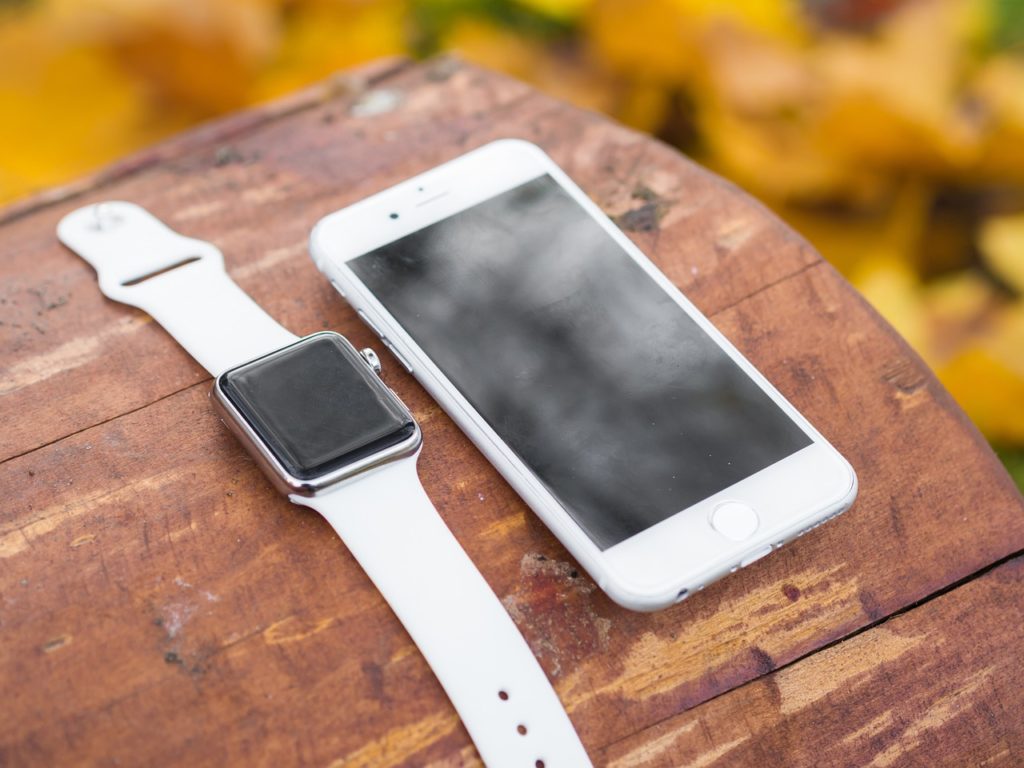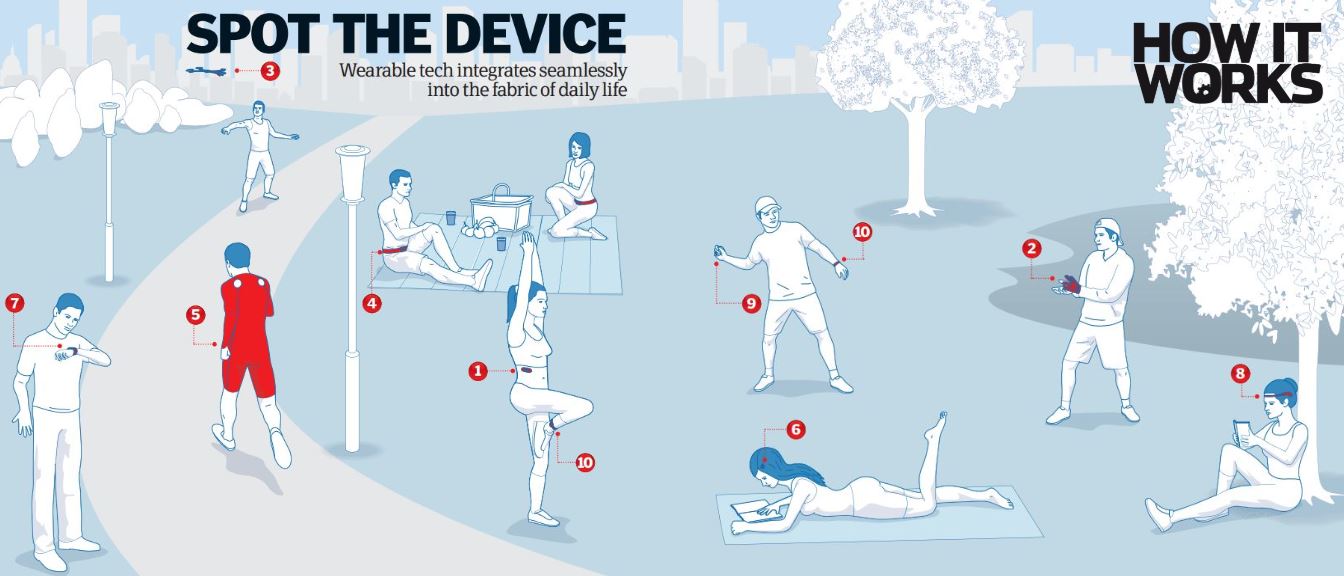What is wearable technology?
by Ailsa Harvey · 25/07/2020
From watches to hairclips, discover the accessories monitoring our bodies

(Image source: Pixabay)
Today, the gadgets we carry are becoming less an extension of ourselves, and more and more a part of us. “Wearables” are electronic or computing devices that are worn on the body –performing functions like tracking, biosensing and mobile communications – and we’re about to see a lot more of them.
The ultimate aim of all wearables is to provide portable, seamless and mostly hands-free access to ‘life-enhancing’ functions. To date, by far the most successful wearables have been fitness trackers that record things like physical activity, heart rate and sleep quality, but many analysts believe we’re on the cusp of a wearables revolution
(Image credit: Future PLC)
1. Heart rate monitor stickers
This is a 24/7 wearable heart-rate and activity monitor that sticks to the skin of the torso like a waterproof plaster. Its echocardiogram (ECG) sensor uses a pair of electrodes to capture the timing of electrical signals produced by the heart as it beats, while its accelerometer tracks posture, activity type and intensity.
2. Smart gloves
This is a sensorloaded smart glove designed to improve efficiency, performance and safety of factory workers. It performs optical scanning and identification of goods, tools and parts; motion tracking to prevent missed steps in production processes; and heart-rate monitoring to help the wearer avoid physical burn-out.
3. Wearable drone
Taking narcissism to the next level, Nixie is the world’s first wearable drone camera. When not in use, its four arms cling to the wrist like a bracelet, but the arms unfold on cue and the Nixie takes flight. Like a boomerang, it arcs through the air taking selfie shots from new dramatic perspectives, leaving the wearer free to pose.
4. Smart belt
Smart belts use pressure sensors and actuators to tighten or loosen itself to the wearer’s preferred level of comfort as their waistline expands and contracts throughout the day. It also houses a pedometer – nudging the wearer if they’ve been sedentary for too long – and connects with an app for long-term analysis.
5. Smart fabrics
Smart fabrics give the wearer information about their body movements. Some have optical fibres woven into them, which scatter light differently as the wearer’s joints bend and flex. Sensoria socks have pressure sensors that relay information about foot strike to a Bluetooth anklet, and a smartphone app helps wearers improve their running technique.
6. UV hairclip
The Solitair app analyses a person’s natural pigmentation from a picture of their skin and combines this with geographical location and weather forecast data to give an individual daily recommendation for safe Sun-exposure time. A UV sensor, worn in the hair or on a lapel, registers exposure and alerts the wearer when it’s time to seek shade.
7. Smartwatch
Just like a phone, these watches have their own 3G service and SIM card, and wearers can make hands-free calls either by speakerphone or via a Bluetooth headset. It also supports messaging, email, fitness monitoring, news blasts, maps and apps.
8. Brain-sensing headband
These measures electrical brain signals via a set of seven electroencephalography (EEG) sensors positioned around the band. Users can study their brain in real-time, as they perform exercises designed to increase focus, reduce stress, or improve their ability to keep calm under pressure.
9. Smart ring
A smart ring can keep smartphone notifications at its wearers’ fingertips, even when their phones are not. The ring pairs to the wearer’s phone via Bluetooth, and flashes up important notifications in the form of subtle text, audio or tactile alerts, leaving the wearer to decide whether to interrupt what they’re doing to respond.
10. Fitness tracker
Moov is a unique nine-axis motionsensing system that maps the wearer’s movements, offering suggestions for improved pace and body positioning in sports from swimming to cardio boxing. Its disc-shaped body houses a magnetometer, gyroscope and accelerometer, and it can be strapped to a wrist, ankle, shoe, or bike pedal.
This article was originally published in How It Works issue 71
For more science and technology articles, pick up the latest copy of How It Works from all good retailers or from our website now. If you have a tablet or smartphone, you can also download the digital version onto your iOS or Android device. To make sure you never miss an issue of How It Works magazine,






